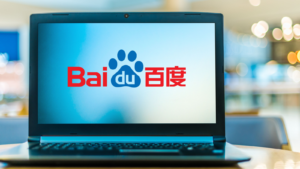AI stocks with “Strong Buy” ratings are likely to become the major investment theme this year, similar to 2023. AI emerged out of nowhere to rock the world last year, steering the stock market with unwavering influence. As businesses rush to build their cutting-edge AI competencies, it’s best to wager on those setting the tone.
The buzz surrounding AI stocks amplifies with forecasts from Bloomberg Intelligence predicting an impressive 42% compound annual growth rate CAGR for generative AI over the next decade, propelling it to a staggering $1.3 trillion industry globally. Yet, the impact of AI extends far beyond financial metrics. This technological juggernaut promises to reshape the fabric of society. AI will influence everything from work dynamics to social interactions and content consumption.
Consequently, investors seek guidance from Wall Street analysts for invaluable perspectives on navigating AI stocks.
Qualcomm (QCOM)

Tech giant Qualcomm (NASDAQ:QCOM), promises to be a bellwether in the AI landscape. Renowned for its prowess in semiconductors, software, and wireless technology, Qualcomm stands out with its Snapdragon line, integrating dedicated AI processing units. The Snapdragon 8 Gen 2 features a robust AI engine, which exemplifies the company’s commitment to on-device AI capabilities.
Qualcomm turned heads in its most recent quarterly report, exceeding EPS estimates by 38 cents to $2.75. Additionally, its sales reached $9.92 billion. This reflects a noteworthy 4.9% year-over-year (YOY) increase. The increase surpassed analysts’ estimates by an impressive $405.8 million.
With all eyes on Qualcomm’s capabilities, a potential AI breakthrough could drive revenue and stock price appreciation. This innovation is poised to pay dividends, and Wall Street analysts affirm this sentiment by assigning Qualcomm a ‘buy’ rating. Their confidence is reflected in the average price target of $161.47, indicating a 6.6% upside potential.
Baidu Inc (BIDU)
Baidu Inc (NASDAQ:BIDU), a Chinese tech giant in AI and internet services, positions itself as an AI frontrunner. Integrating ERNIE into Samsung’s Galaxy S24, BIDU offers multiple cutting-edge AI features, including the much-talked-about real-time translation offering.
Its proactive approach towards embracing AI and monetization efforts has already proven fruitful for Baidu, as evidenced by unexpectedly strong third-quarter results. Amidst the slump in the Chinese economy, Baidu’s sales and earnings comfortably surpassed expectations, a welcome development for the business. Reinforcing its strong market position, Bank of America’s reiterated confidence in Baidu’s AI prospects further emphasizes its positive trajectory.
Furthermore, Baidu earned Wall Street’s acclaim with a “Strong Buy” rating and a remarkable 54.8% projected upside potential, coupled with an enticing average price target of 162.46, reinforcing its AI dominance.
Microsoft (MSFT)

Microsoft (NASDAQ: MSFT) is strategically investing billions in advancing AI, and this robust commitment has added a new layer to its growth story. Demonstrating this commitment, it has effectively layered AI across its timeless software suite, including Office, Bing search engine, and Edge browser.
In its most recent quarter, Microsoft dazzled, exceeding expectations with a GAAP EPS of $2.93, surpassing estimates by 16 cents, with revenues of $62.02 billion, marking a substantial 17.7% YOY increase, beating projections by $890 million.
Furthermore, integrating AI into Microsoft 365 Copilot and releasing AI-enhanced Surface devices further solidify Microsoft’s AI-forward strategy. Recognizing this momentum, Wall Street analysts assign MSFT a ‘strong buy’, pointing to a promising 16% upside potential. Microsoft’s successful blend of financial strength and innovative AI integration positions the company as a leading force in driving tech progress. If you are looking for AI stocks with “Strong Buy” ratings, start here.
On the date of publication, Muslim Farooque did not have (either directly or indirectly) any positions in the securities mentioned in this article. The opinions expressed in this article are those of the writer, subject to the InvestorPlace.com Publishing Guidelines


